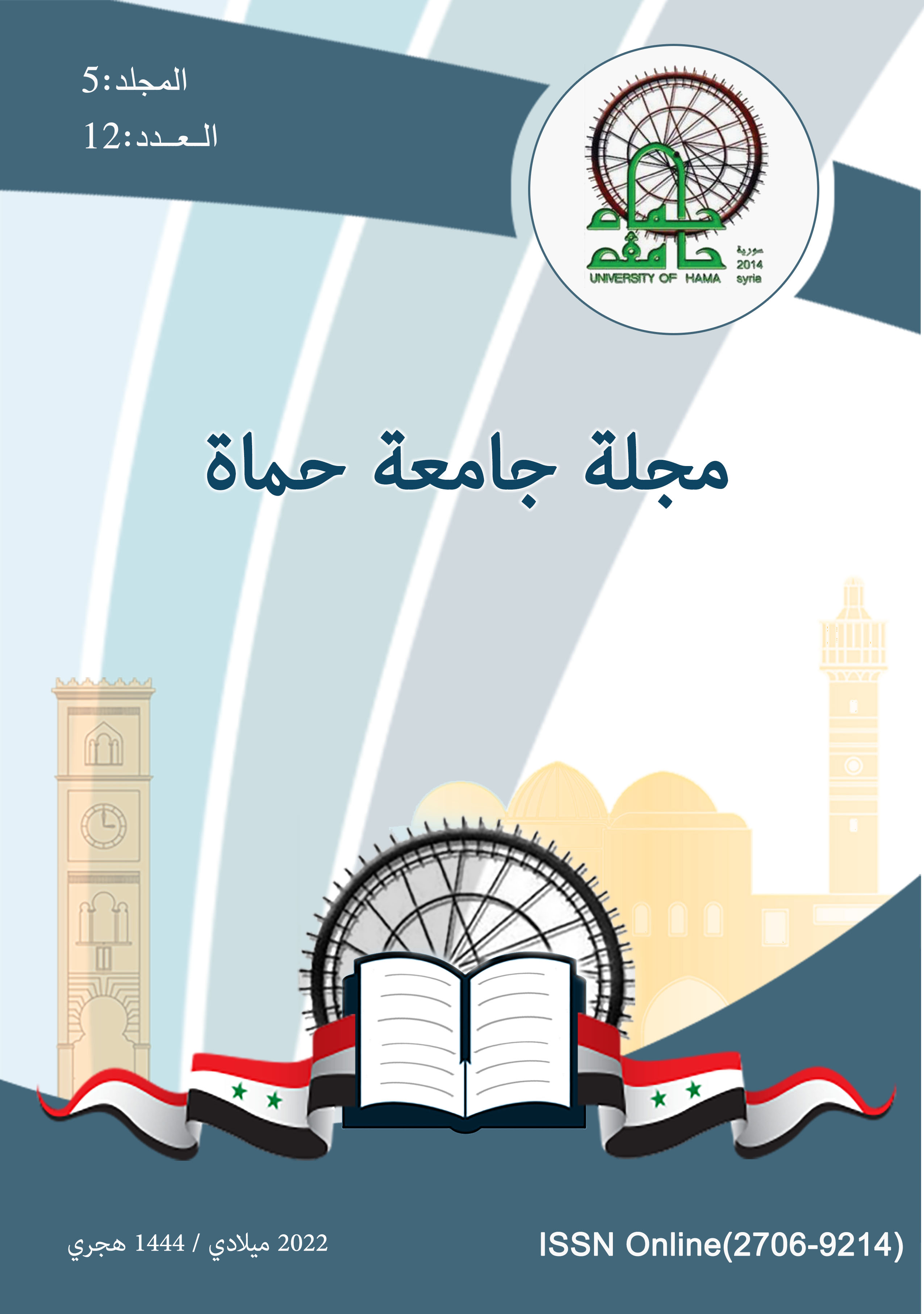In-vitro Comparative Study to Evaluate Fracture Strength for PMMA CAD/CAM discs (indirect technique) and Bis-acrylic resin (direct technique) Used in the Fabrication of Provisional Bridges.
الملخص
Abstract
Interim (temporary) restorations play an important role in the prosthodontic treatment plans, and these temporary restorations serve from the beginning of the preparation phase until its end when the permanent fixed restoration is cemented and fixed.
Due to the importance of these prostheses, several studies have been carried out aimed at knowing the optimal material for the manufacture of these interim prostheses. Poly methyl methacrylate resins (PMMA) and Composite-based resins (CBR) are the most common materials used in the fabrication of these interim fixed prostheses. Moreover, the breakage of those interim prostheses is considered to be the most important reason for its clinical failure; therefore, knowing the mechanical properties of the dental materials used in the fabrication of these prostheses is important and should not be neglected, to ensure the clinical success as much as possible.
Aim of the research: This research aims to compare and evaluate the fracture resistance of both polymethyl methacrylate PMMA (indirect method, using CAD/CAM technology), and bis-acrylic resin (direct method), which are used in the manufacture of temporary bridges that replace the missing lower first molar.
Materials and methods: The research sample consisted of /20 / interim bridges, which were fabricated on a metal master typodont (dentiform), made from Cr-Co alloy, to stimulate the average dimension of the prepared second premolar and the second molar, within the first molar as a missing tooth. Then the sample was divided into two identical groups as follows:
The first group: the interim restorations were made by the indirect method (PMMA CAD/CAM prefabricated disks). While the second group’s restorations were made by the direct method (bis-acrylic resin). After that, all groups were subjected to fracture resistance mechanical test, then collected data was analyzed.
Results: the average fracture resistance of the PMMA CAD/CAM interim bridges (indirect technique), was higher than the average fracture resistance of the bis-acrylic resin (direct technique).
References
2-(1976) Mechanics of brittle fracture (Mekhanika khrupkogo razrusheniya). International Journal of Fracture, 12, 785-787.
3-Al-Dwairi, Z. N., K. Y. Tahboub, N. Z. Baba & C. J. Goodacre (2020) A Comparison of the Flexural and Impact Strengths and Flexural Modulus of CAD/CAM and Conventional Heat-Cured Polymethyl Methacrylate (PMMA). Journal of Prosthodontics, 29, 341-349.
4-Anusavice, K. J., C. Shen & H. R. Rawls. 2012. Phillips' science of dental materials. Elsevier Health Sciences.
5-Burns, D. R., D. A. Beck & S. K. Nelson (2003a) A review of selected dental literature on contemporary provisional fixed prosthodontic treatment: report of the Committee on Research in Fixed Prosthodontics of the Academy of Fixed Prosthodontics. The Journal of prosthetic dentistry, 90, 474-497.
6-Cheng, C.-J., C.-L. Lin & Y.-F. Shan (2010) Multifactorial analysis of variables influencing the fracture strength of repair joints for provisional restorative materials using the statistically based Taguchi method. Journal of Dental Sciences, 5, 90-99.
7-Chitmongkolsuk, S., G. Heydecke, C. Stappert & J. Strub (2002) Fracture strength of all-ceramic lithium disilicate and porcelain-fused-to-metal bridges for molar replacement after dynamic loading. The European journal of prosthodontics and restorative dentistry, 10, 15-22.
8-Faruqi, S., K. K. Ganji, V. Bandela, A. K. Nagarajappa, R. N. Mohamed, M. A. Ahmed, M. Farhan, W. N. Alwakid, K. A. S. Al-Hammad & M. K. Alam (2021) Digital assessment of marginal accuracy in ceramic crowns fabricated with different marginal finish line configurations. Journal of Esthetic and Restorative Dentistry, n/a.
9-Goodacre, C. J., W. V. Campagni & S. A. Aquilino (2001) Tooth preparations for complete crowns: an art form based on scientific principles. J Prosthet Dent, 85, 363-76.
10-Gratton, D. G. & S. A. Aquilino (2004a) Interim restorations. Dent Clin North Am, 48, vii, 487-97.
11-Hada, T., M. Kanazawa, M. Iwaki, A. Katheng & S. Minakuchi (2021a) Comparison of Mechanical Properties of PMMA Disks for Digitally Designed Dentures. Polymers, 13, 1745.
12-Kuphasuk, W., N. Ponlasit & C. Harnirattisai (2018) Flexural strengths and color stability of bis-acryl resin materials for provisional restorations. Mahidol Dental Journal, 38, 135-146.
13-Liu, P. R. & M. E. Essig (2008) Panorama of dental CAD/CAM restorative systems. Compend Contin Educ Dent, 29, 482, 484, 486-8 passim.
14-Manappallil, J.J. (2016). Basic dental materials. New Delhi ; Philadelphia: Jaypee Brothers Medical Publishers (P), Ltd.
15-Mei, M. L., S. Y. C. So, H. Li & C. H. Chu (2015) Effect of Heat Treatment on the Physical Properties of Provisional Crowns during Polymerization: An in Vitro Study. Materials (Basel), 8, 1766-1777..
16-Nelson, S.J. and Ash, M.M. (2014). Wheeler’s dental anatomy, physiology, and occlusion. St. Louis, Mo.: Saunders/Elsevier, Repr.
17-Phillips R, Goodacre C, Dykema R. (1992) Modern Practice In Fixed Prosthodontics, Fourth Edition, P77 – 89.
18-Rayyan, M. M., M. Aboushelib, N. M. Sayed, A. Ibrahim & R. Jimbo (2015) Comparison of interim restorations fabricated by CAD/CAM with those fabricated manually. J Prosthet Dent, 114, 414-9.
19-Rosenstiel, S. & M. Land. 2016. Contemporary fixed prosthodontics-e-book. Elsevier Health Sciences.
20-Shillingburg, H. T., S. Hobo, L. D. Whitsett, R. Jacobi & S. Brackett. 1997. Fundamentals of fixed prosthodontics. Quintessence Publishing Company.
21-Thompson, G. A. & Q. Luo (2014) Contribution of postpolymerization conditioning and storage environments to the mechanical properties of three interim restorative materials. The Journal of Prosthetic Dentistry, 112, 638-648.
22-Tom, T., M. Uthappa, K. Sunny, F. Begum, M. Nautiyal & S. Tamore (2016) Provisional restorations: An overview of materials used. Journal of Advanced Clinical & Research Insights, 3, 212-214.
23-Wenceslao González-Viñas and ManciniH.L. (2004). An introduction to materials science. Princeton, N.J.: Princeton University Press.
24-Yanikoğlu, N. D. k., F. Bayindir, D. Kürklü & B. Beşir (2014) Flexural Strength of Temporary Restorative Materials Stored in Different Solutions. Open Journal of Stomatology, Vol.04No.06, 8.
25- Zortuk, M., H. O. Gumus, H. I. Kilinc & A. R. Tuncdemir (2012) Effect of different provisional cement remnant cleaning procedures including Er:YAG laser on shear bond strength of ceramics. J Adv Prosthodont, 4, 192-6.


